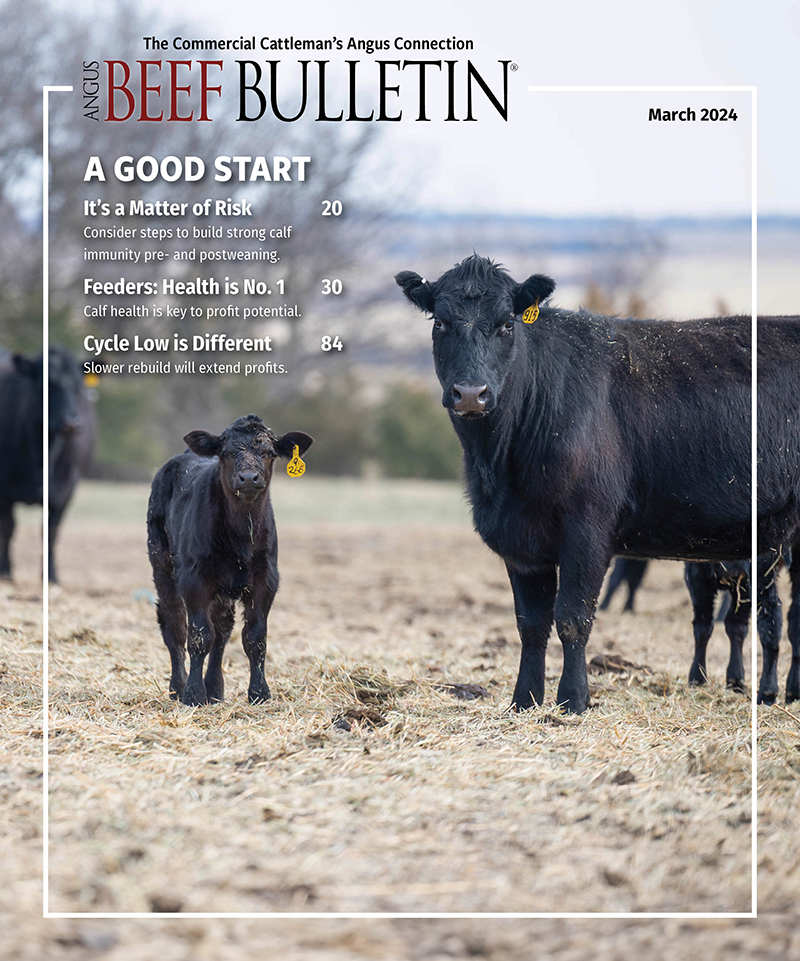

Market Closeout: The Pareto Principle
80% of your results result from 20% of your efforts.
I’ve always been a business book junkie. I read them to find principles that can be applied to the cattle industry.
In many respects business is business, but I think the beef industry provides one of the most challenging environments that exist for managers.
Although it is largely unmanageable, managers in the beef industry must plan for extremes and adapt to weather conditions. Two major challenges include the facts:
- managers are expected to be experts in multiple fields; and
- they must make decisions in one of the most rapidly changing marketplaces.
We are tasked with creating value within the context of a commodity system, applying science and technology in a business with narrow margins. Also, there is pressure to improve quality in a fragmented, largely uncoordinated production environment.
Being a “good manager” in our industry with all these diverse demands is no small feat.
The 80/20 rule
Many people are familiar with the 80/20 rule, also known as the Pareto Principle. It states that 80% of results come from 20% of your efforts.
It simply means you must identify the activities that are the most productive and make them a priority. I have come to believe this simple principle is found in most of the great business books. Fig. 1 shares a very short reading list of books that have influenced me. What I find fascinating is that all these books promote a variation of the 80/20 rule as a key component of their message.
This principle is simple in theory, but difficult in application — especially in the cattle business.
Most of us with a little thought can determine what it is that we are qualified to do. We can assign economic values to different tasks and determine what efforts are providing the highest returns. In some cases, we can identify individuals who specialize in certain areas and excel and bring them onto our teams.
Many ranchers have a team that includes veterinarians, nutritionists, seedstock suppliers, accountants, bankers and marketing experts, to name just a few. We find people who are uniquely gifted or positioned to do the myriad of tasks we must accomplish — whether it be custom-feeding, custom-farming or a host of other services. We find the “who” — the team members who can move us forward.
Challenges
Cattlemen are unique in that we wear so many hats, and we realize we cannot be the best in every area. We have become pretty good at leveraging our unique advantages and farming out activities that are not necessarily in our wheelhouse. With that said, we also have some inherent issues when trying to apply the Pareto Principle.
The first issue is the availability of labor. We understand time spent marketing our cattle returns more dollars than chopping ice; but, the ice must be chopped. Finding labor for everyday management tasks is difficult, so many managers spend time doing $20-per-hour jobs when they could be doing tasks that return $200 per hour.
The second inherent issue is a combination of cash flow and risk aversion. We have a strong sense of independence, and there is a lot of risk associated with hiring someone. There is the risk of taking on the expense and the risk that they will not perform the job as well as we would.
Delegating is hard
Personally, I let all of these prevent me from building out a team. I’ve always known about the increase in efficiency and effectiveness, and I understood there were tasks that I was doing that I wasn’t particularly good at. I certainly knew I didn’t have all the answers.
It wasn’t as hard admitting I needed help as it was having the faith in myself, believing that if I focused my efforts on the 20% that it would help pay for the help on the other 80%. Ironically, every time I found the gumption to make the leap of faith, it brought success. Still, I was hesitant to delegate responsibilities.
Another common snag I’ve found in implementing the 80/20 rule is how focusing on the 20% invariably means focusing less on the 80%. This means de-emphasizing all or most of the 80% either through delegation, outsourcing or elimination altogether.
Tradition is a powerful thing. I was pretty good at adding new tactics or tasks, but not so good at eliminating old ones.
Additionally, I think ranchers are so good at making incremental improvements over time, that we rarely step back and look for the quantum leaps that might be possible for our operation. We have a way of looking at improvement in a linear fashion rather than looking for exponential improvements.
This linear growth is hard. Not only do you have a lot of competition, but it also usually involves doing the same thing — but just doing it better — or working harder.
Focusing on exponential leaps forces you to focus on the top 20% and embrace how there is truly the possibility of addition through subtraction.
Where we can help
The AngusLinkSM program is meant to help build relationships, simplify the marketing process and improve value capture. We can leverage the strength that is created through a network, economies of scale and focus.
The AngusLink program is designed to help make the marketing of your cattle easier, enabling producers to focus on the 20% that each manager is uniquely positioned to do.
Marketing is almost always a top 20% consideration for the profitability of a business. AngusLink is designed to maximize its effectiveness.
Let us help you claim your competitive edge in the marketplace, and you can get back to what it is that you do best.
Editor’s note: Troy Marshall is director of commercial industry relations for the American Angus Association.



